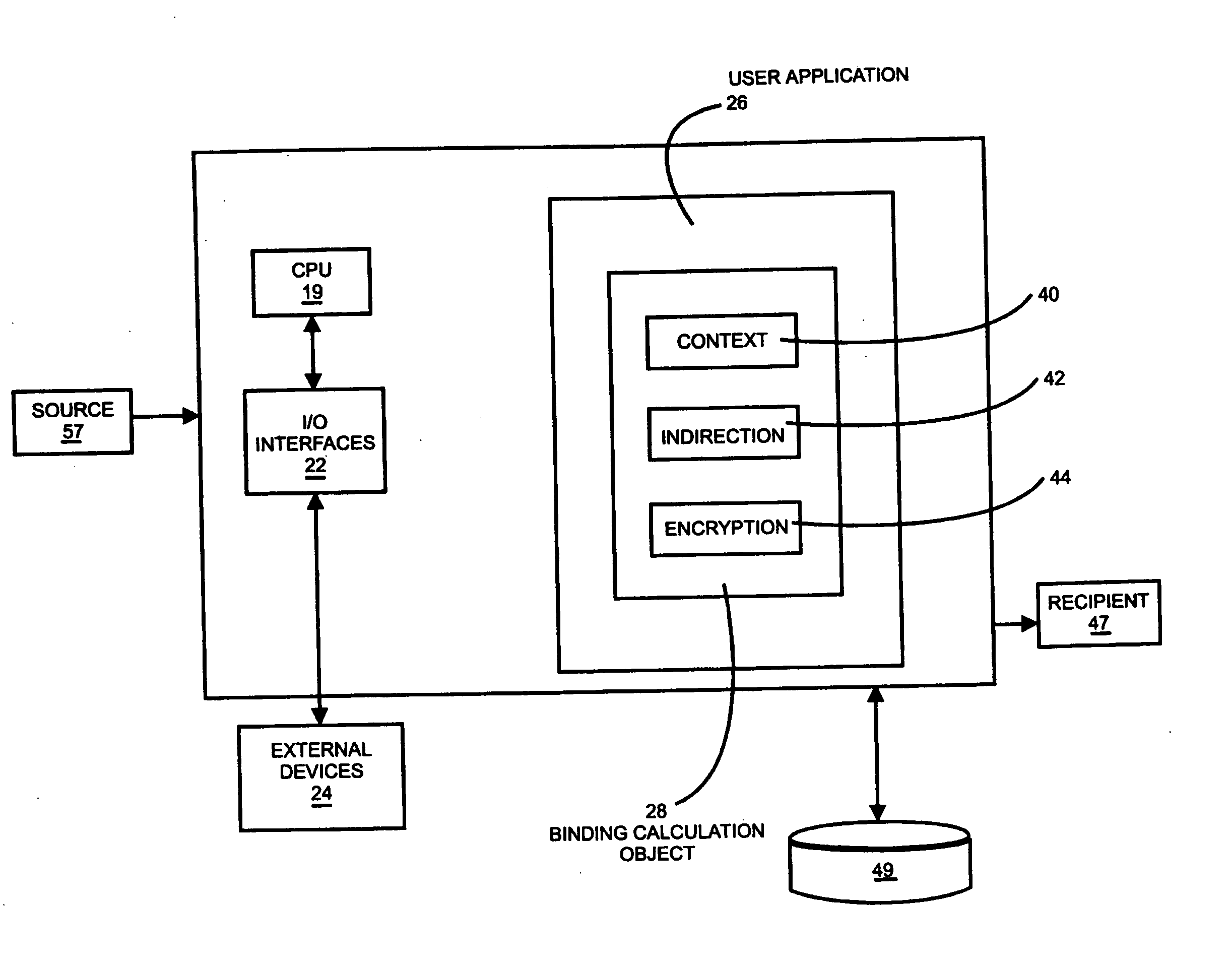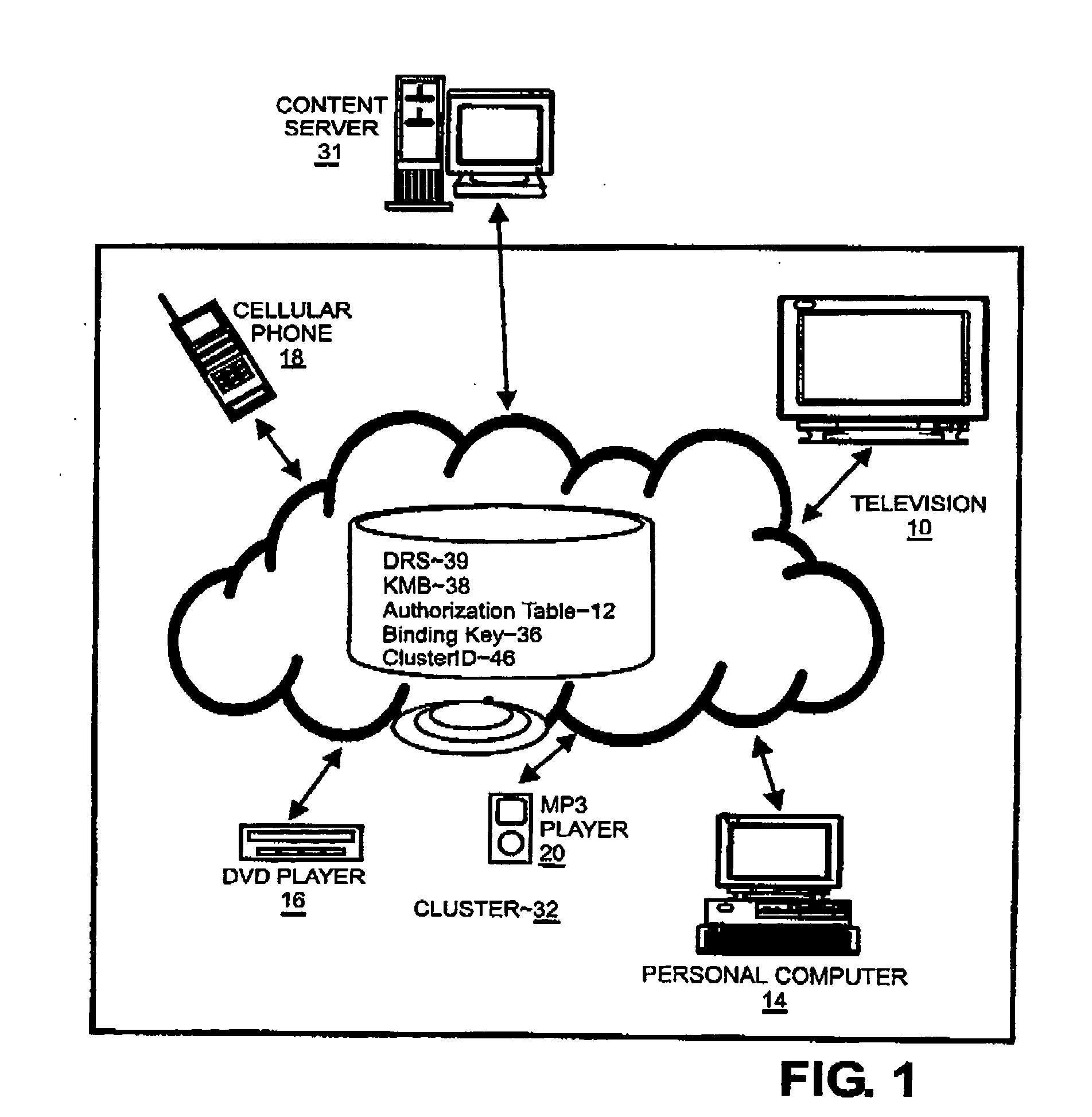System and method for managing encrypted content using logical partitions
a technology of logical partitions and encrypted content, applied in the field of data encryption, can solve the problems of weakening the security of copy protection schemes, affecting the security of content owners, and affecting the use of devices outside the cluster,
- Summary
- Abstract
- Description
- Claims
- Application Information
AI Technical Summary
Benefits of technology
Problems solved by technology
Method used
Image
Examples
Embodiment Construction
[0017] Referring to FIG. 1, a line drawing of exemplary network architecture is shown in which methods and systems according to embodiments of the present invention may be implemented. While the present invention is operable with various binding schemes, such as binding to a specific receiver in standard PKI applications, binding to a specific media in CPRM and AACS Media, FIG. 1 shows the binding scheme wherein the binding is to a specific user's content in xCP Cluster Protocol. The network of FIG. 1 includes an xCP compliant network cluster 32 that includes several xCP compliant network devices including a cellular telephone 18, a television 10, a DVD player 16, a personal computer 14, and an MP3 player 20. The network may be any type of wired or wireless network, such as Local Area Network (LANS) or Wide Area Networks (WANS). Content may be any data deliverable from a source to a recipient and may be in the form of files such as an audio data file, a video data file, a media data...
PUM
 Login to View More
Login to View More Abstract
Description
Claims
Application Information
 Login to View More
Login to View More - R&D
- Intellectual Property
- Life Sciences
- Materials
- Tech Scout
- Unparalleled Data Quality
- Higher Quality Content
- 60% Fewer Hallucinations
Browse by: Latest US Patents, China's latest patents, Technical Efficacy Thesaurus, Application Domain, Technology Topic, Popular Technical Reports.
© 2025 PatSnap. All rights reserved.Legal|Privacy policy|Modern Slavery Act Transparency Statement|Sitemap|About US| Contact US: help@patsnap.com



